Your cart is currently empty!
Tag: Robust
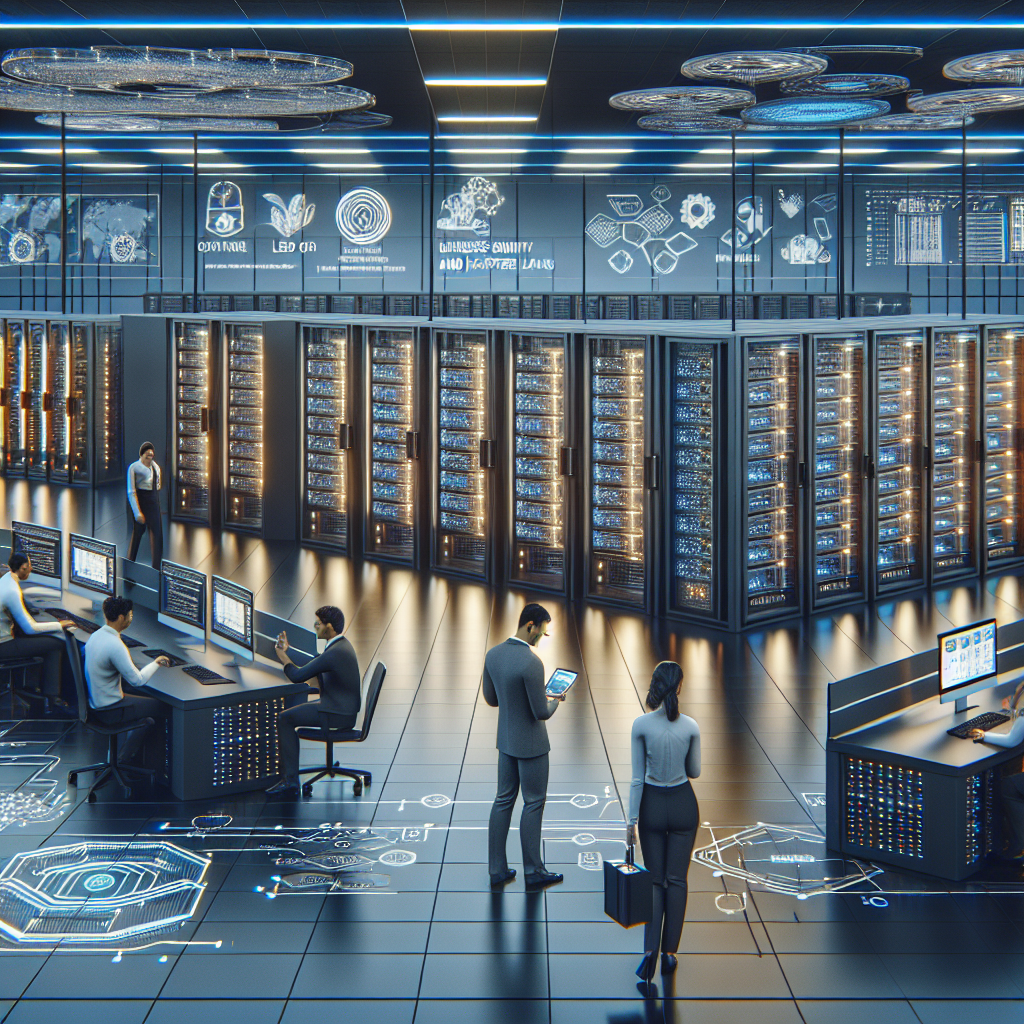
Preparing for the unexpected: How data centers are implementing robust business continuity strategies
In today’s fast-paced and ever-changing business landscape, it’s more important than ever for companies to be prepared for the unexpected. This includes having a robust business continuity strategy in place to ensure that operations can continue even in the face of unforeseen disruptions.Data centers, in particular, play a crucial role in the modern business world. They are responsible for storing and managing vast amounts of data that organizations rely on to run their operations. As such, it is imperative that data centers have effective business continuity plans in place to safeguard this critical information.
One of the key components of a successful business continuity strategy for data centers is redundancy. This means having backup systems and infrastructure in place to ensure that operations can continue even if one part of the data center fails. This could include redundant power supplies, backup servers, and data replication systems to ensure that data is always available, even in the event of a disaster.
Another important aspect of business continuity planning for data centers is disaster recovery. This involves having a plan in place to quickly and efficiently recover data and restore operations in the event of a major disruption, such as a natural disaster or cyberattack. This could include regular testing of backup systems, as well as training employees on how to respond in the event of an emergency.
In addition to technical solutions, data centers also need to consider the human element when it comes to business continuity planning. This includes having clear communication protocols in place so that employees know what to do in the event of a disruption, as well as training staff on how to implement the business continuity plan effectively.
Overall, preparing for the unexpected is a critical part of running a successful data center. By implementing robust business continuity strategies that include redundancy, disaster recovery, and clear communication protocols, data centers can ensure that they are able to continue operations even in the face of unforeseen disruptions. This not only protects the data center itself but also helps to safeguard the critical data that organizations rely on to run their businesses.
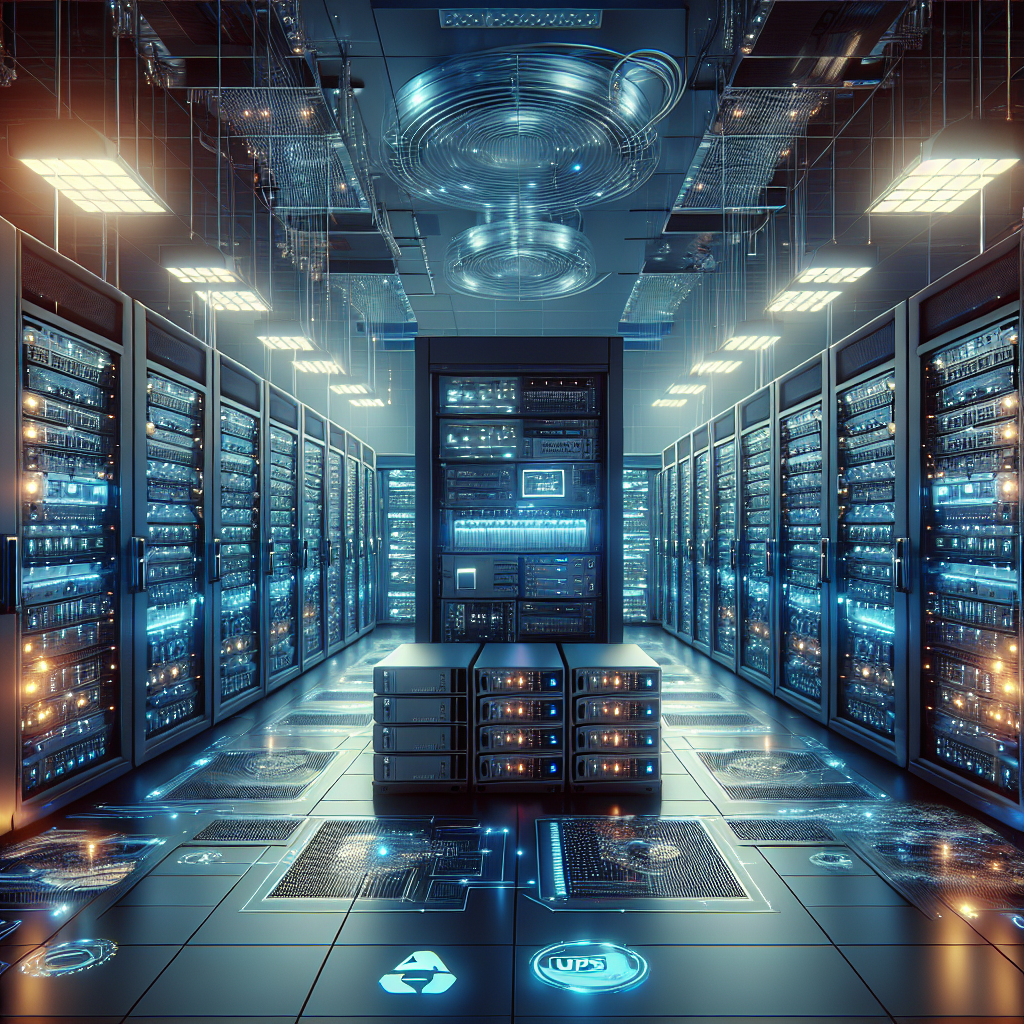
Building a Robust Data Center: Strategies for Ensuring Resilience and Reliability
In today’s digital age, data centers are the backbone of every organization’s IT infrastructure. They store and manage vast amounts of data critical to business operations, making them essential for maintaining business continuity. As such, ensuring the resilience and reliability of these data centers is crucial to prevent costly downtime and data loss.Building a robust data center requires a strategic approach that encompasses various aspects of design, infrastructure, and operational practices. By implementing the following strategies, organizations can enhance the resilience and reliability of their data center infrastructure:
1. Redundant Power and Cooling Systems: Power outages and cooling failures are common causes of data center downtime. To mitigate these risks, data centers should have redundant power and cooling systems in place. This includes backup generators, uninterruptible power supply (UPS) units, and redundant cooling systems to ensure continuous uptime even in the event of a power outage or cooling failure.
2. Data Center Location and Physical Security: The location of a data center plays a critical role in its resilience and reliability. Data centers should be situated in secure locations with minimal exposure to natural disasters such as floods, earthquakes, and hurricanes. Additionally, physical security measures such as access controls, surveillance cameras, and security guards should be in place to prevent unauthorized access and protect the data center from physical threats.
3. Network Redundancy and Connectivity: A robust data center should have multiple network connections and redundant connectivity to ensure continuous access to data and applications. This includes diverse internet service providers (ISPs), redundant network switches, and failover mechanisms to switch traffic to alternate connections in case of a network outage.
4. Regular Maintenance and Monitoring: Regular maintenance and monitoring are essential to the reliability of a data center. This includes conducting routine inspections of hardware, software, and infrastructure components, as well as monitoring performance metrics and alerts to identify potential issues before they escalate into major problems.
5. Disaster Recovery and Business Continuity Planning: In the event of a catastrophic event such as a natural disaster or cyberattack, having a comprehensive disaster recovery and business continuity plan is crucial. This includes regular backups of data, offsite storage of critical data, and a well-defined plan for restoring operations in the event of a disaster.
By implementing these strategies, organizations can build a robust data center that ensures resilience and reliability, minimizing the risk of downtime and data loss. Investing in the right infrastructure, operational practices, and disaster recovery planning can help organizations maintain business continuity and protect their critical data assets.
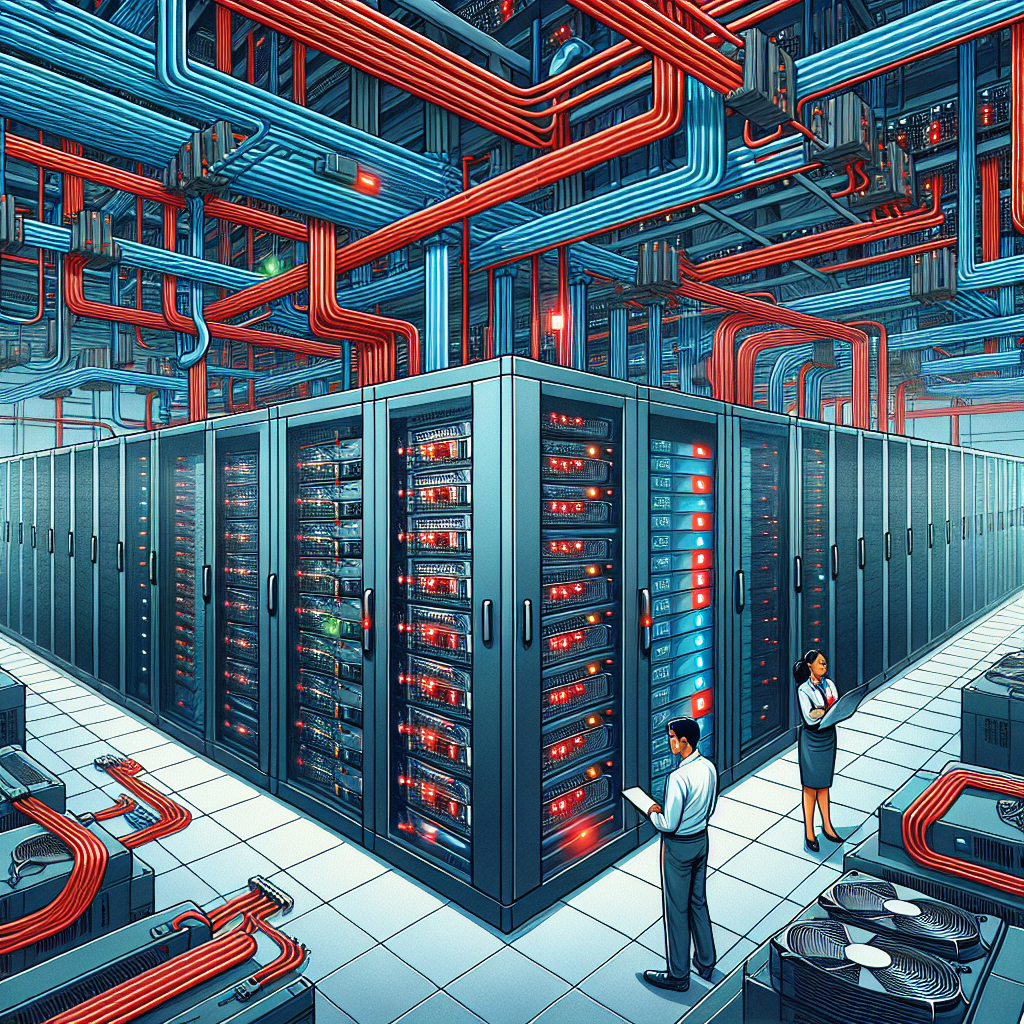
Maximizing Uptime with Robust Data Center Electrical Systems
In today’s digital age, businesses rely heavily on data centers to store, manage, and process their critical information. With the increasing demand for high availability and uninterrupted access to data, it is essential for data center operators to maximize uptime and ensure the reliability of their electrical systems.One of the key components of a data center’s infrastructure is its electrical system. A robust electrical system is essential for ensuring the continuous operation of servers, networking equipment, and other critical components. By implementing best practices and utilizing advanced technologies, data center operators can maximize uptime and minimize the risk of costly downtime.
One way to maximize uptime is by designing a redundant electrical system. Redundancy involves having multiple backup systems in place to ensure that power is always available, even in the event of a failure. This can include redundant power supplies, backup generators, and uninterruptible power supply (UPS) systems. By having redundant systems in place, data center operators can minimize the risk of downtime due to power outages or equipment failures.
Regular maintenance and testing of electrical systems are also crucial for maximizing uptime. Data center operators should conduct routine inspections, testing, and maintenance of electrical equipment to identify and address potential issues before they escalate into costly downtime. This includes checking for loose connections, testing backup systems, and monitoring power quality to ensure that the electrical system is operating at peak performance.
In addition to regular maintenance, data center operators can also leverage advanced monitoring and management technologies to optimize their electrical systems. Remote monitoring systems can provide real-time data on power usage, temperature, and equipment performance, allowing operators to proactively identify and address potential issues before they impact uptime. Automated management systems can also help optimize power distribution, improve energy efficiency, and ensure that critical equipment is receiving the necessary power supply.
By implementing best practices, leveraging advanced technologies, and prioritizing regular maintenance, data center operators can maximize uptime and ensure the reliability of their electrical systems. With a robust electrical infrastructure in place, businesses can enjoy uninterrupted access to their critical data and applications, and avoid the costly consequences of downtime.
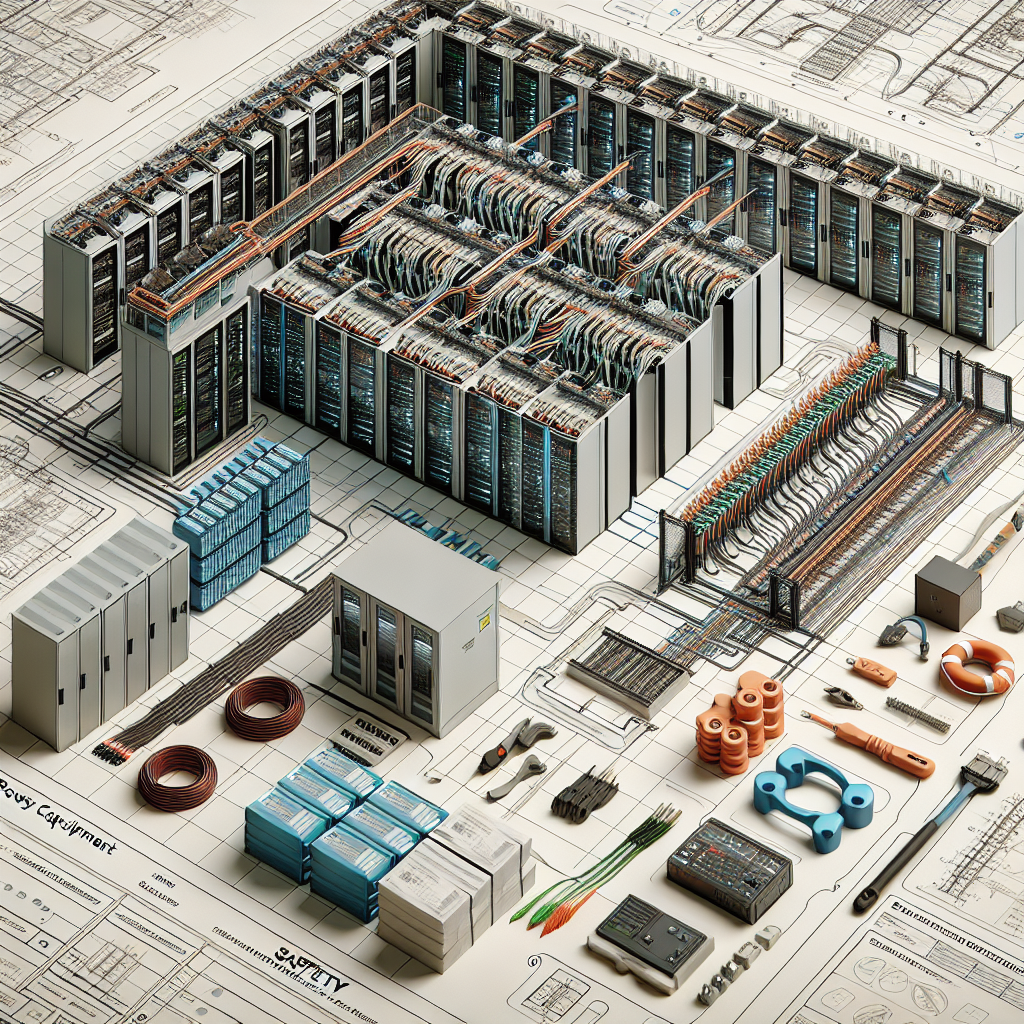
Best Practices for Designing a Robust Power Distribution System in Data Centers
Data centers are the nerve centers of modern businesses, housing the critical infrastructure that supports the digital operations of organizations. One of the key components of a data center is its power distribution system, which ensures that electricity is delivered reliably and efficiently to all the equipment and servers housed within the facility. Designing a robust power distribution system is crucial for ensuring the uninterrupted operation of a data center and minimizing the risk of costly downtime.Here are some best practices for designing a robust power distribution system in data centers:
1. Redundancy: Redundancy is key to ensuring the reliability of a power distribution system. Data centers should have redundant power sources, such as multiple utility feeds or backup generators, to ensure that power is always available in the event of a failure. Redundant power distribution units (PDUs) and uninterruptible power supplies (UPSs) should also be deployed to provide backup power to critical equipment.
2. Scalability: A data center’s power distribution system should be designed with scalability in mind. As the demand for power grows, the power distribution system should be able to easily accommodate additional equipment and servers without the need for major upgrades or overhauls.
3. Proper grounding and bonding: Proper grounding and bonding are essential for ensuring the safety and reliability of a power distribution system. Data centers should adhere to industry standards and best practices for grounding and bonding to mitigate the risk of electrical hazards and equipment damage.
4. Monitoring and management: Data centers should implement robust monitoring and management systems for their power distribution infrastructure. Real-time monitoring of power usage, temperature, and other critical metrics can help identify potential issues before they escalate into major problems. Remote management capabilities also allow for quick response to power-related issues.
5. Energy efficiency: Energy efficiency is a key consideration in the design of a power distribution system. Data centers should implement energy-efficient power distribution equipment, such as high-efficiency UPSs and PDUs, to reduce power consumption and operating costs. Implementing energy-saving practices, such as hot aisle/cold aisle containment and airflow optimization, can also help improve the overall efficiency of a data center’s power distribution system.
6. Regular maintenance and testing: Regular maintenance and testing are essential for ensuring the reliability of a power distribution system. Data center operators should conduct routine inspections, testing, and maintenance of power distribution equipment to identify and address potential issues before they cause downtime. Scheduled load testing and battery testing for UPSs are also important to verify the system’s readiness in the event of a power outage.
In conclusion, designing a robust power distribution system is critical for ensuring the reliable operation of a data center. By following best practices such as implementing redundancy, scalability, proper grounding and bonding, monitoring and management, energy efficiency, and regular maintenance and testing, data center operators can minimize the risk of downtime and ensure the continuous availability of critical services.
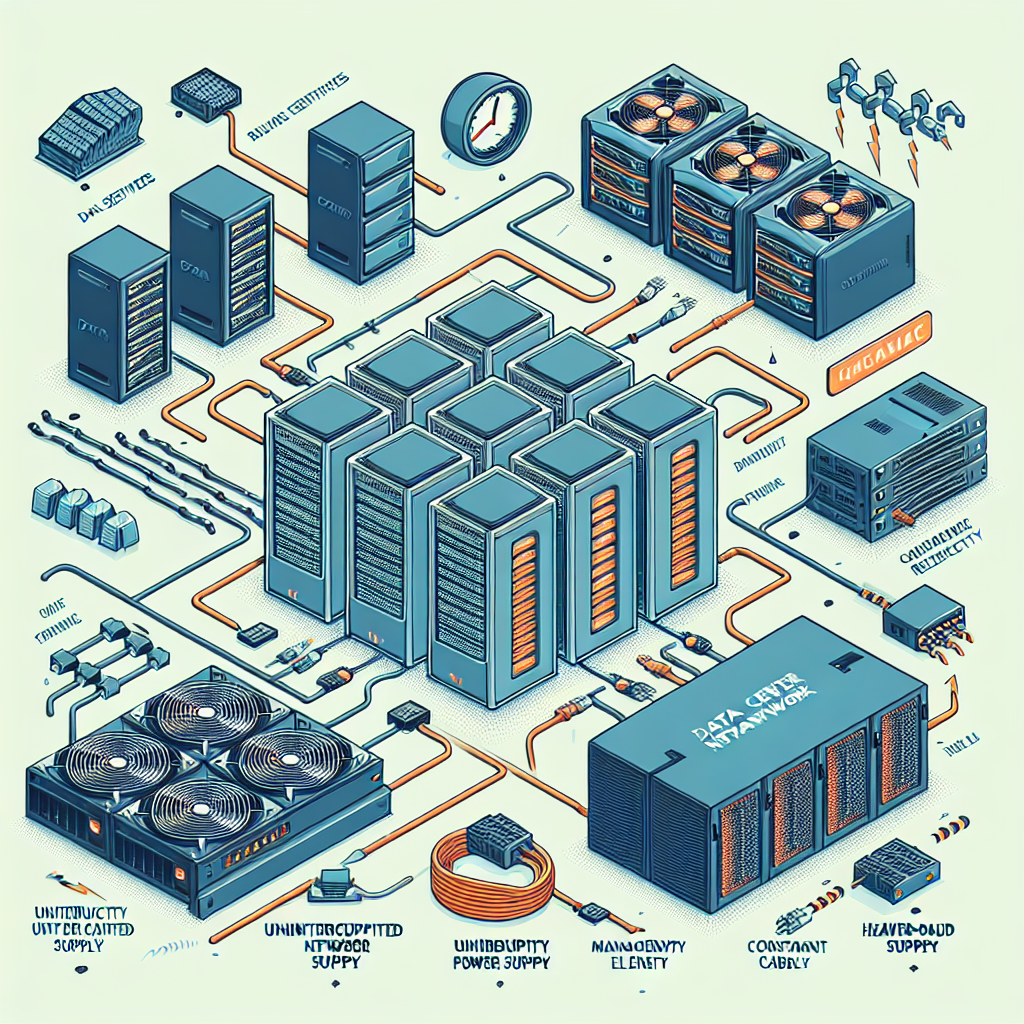
Key Components of a Robust Data Center Network Infrastructure
A data center network infrastructure is a crucial component of modern businesses, allowing for the seamless flow of information and data between various systems and applications. A robust network infrastructure is essential for ensuring high performance, reliability, and security for a data center. There are several key components that make up a strong data center network infrastructure, each playing a vital role in ensuring the smooth operation of the data center.1. Network Switches: Network switches are essential components of a data center network infrastructure, acting as the central point for connecting all devices and systems within the data center. Switches allow for the efficient routing of data packets between devices, enabling fast and reliable communication between servers, storage devices, and other network equipment.
2. Routers: Routers are another critical component of a data center network infrastructure, providing the connection between the data center and external networks such as the internet. Routers help to route data packets between different networks, ensuring that data is delivered to the correct destination in a timely manner.
3. Firewalls: Firewalls are essential for ensuring the security of a data center network infrastructure. Firewalls help to monitor and control incoming and outgoing network traffic, filtering out potentially harmful data packets and preventing unauthorized access to the data center network.
4. Load Balancers: Load balancers are used to distribute incoming network traffic across multiple servers in a data center, ensuring that no single server becomes overloaded and causing performance issues. Load balancers help to optimize the performance and availability of applications and services within the data center.
5. Network Monitoring Tools: Network monitoring tools are essential for monitoring the performance and health of a data center network infrastructure. These tools provide real-time visibility into network traffic, bandwidth usage, and device performance, allowing for proactive monitoring and troubleshooting of network issues.
6. Redundant Network Connections: Redundant network connections are essential for ensuring high availability and reliability of a data center network infrastructure. By implementing multiple network connections and paths, data centers can ensure that network traffic can be rerouted in the event of a network failure, minimizing downtime and ensuring continuous operation.
7. Scalability: A robust data center network infrastructure should be designed with scalability in mind, allowing for easy expansion and growth as the data center’s needs evolve. Scalable network infrastructure allows businesses to add new servers, storage devices, and applications without disrupting the existing network architecture.
In conclusion, a robust data center network infrastructure is essential for ensuring the performance, reliability, and security of a data center. By incorporating key components such as network switches, routers, firewalls, load balancers, network monitoring tools, redundant network connections, and scalability, businesses can build a strong and resilient network infrastructure that can support their data center operations effectively. It is essential for businesses to invest in a robust data center network infrastructure to ensure the smooth operation of their data center and support their business growth and success.
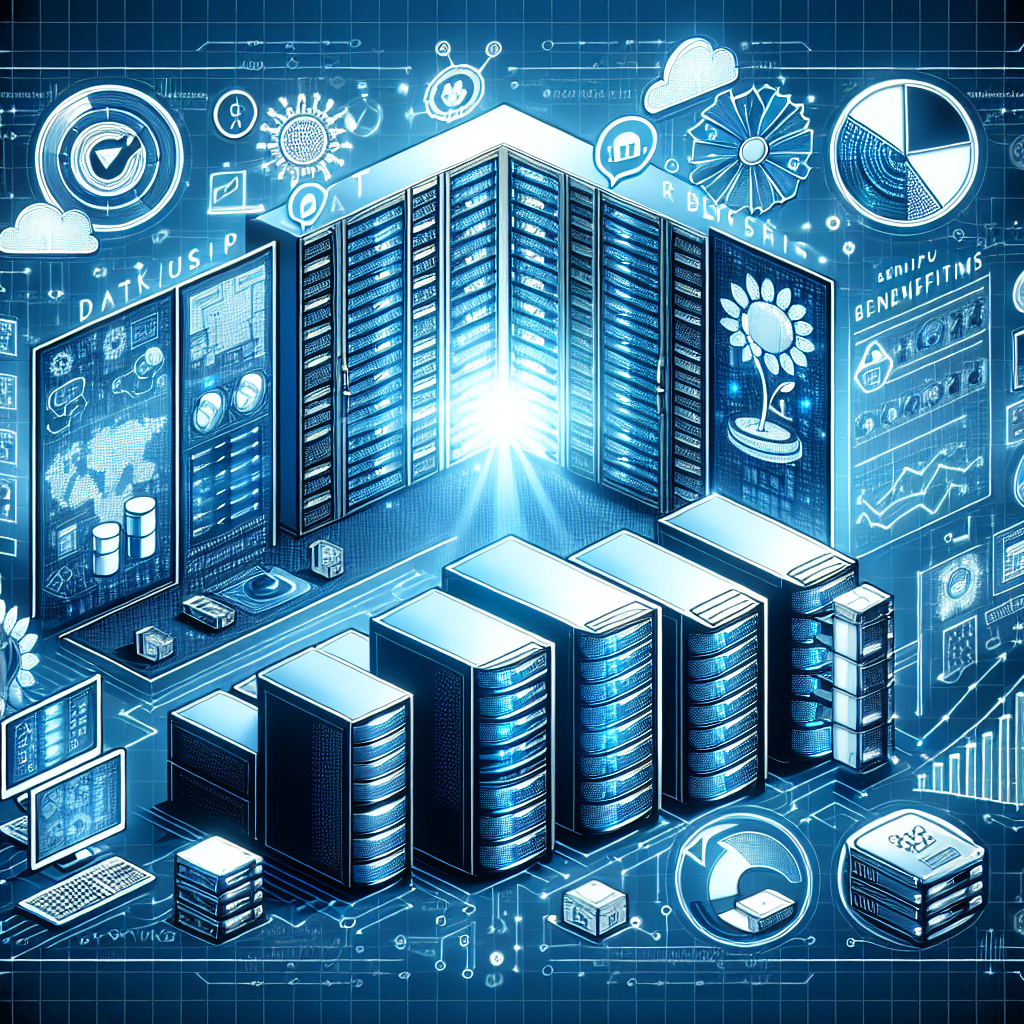
The Benefits of Implementing a Robust Data Center Backup and Recovery Strategy
In today’s digital age, data is the lifeblood of businesses. From customer information to financial records, companies rely on data to operate efficiently and effectively. However, with the increasing threat of cyber attacks, natural disasters, and human error, data loss is a very real risk that can have devastating consequences for organizations.Implementing a robust data center backup and recovery strategy is crucial for protecting your business’s valuable data. By ensuring that your data is regularly backed up and easily recoverable in the event of a disaster, you can minimize downtime, maintain business continuity, and safeguard your company’s reputation.
One of the key benefits of implementing a data center backup and recovery strategy is the ability to quickly recover data in the event of a disaster. Whether it’s a cyber attack that encrypts your files, a hardware failure that causes data loss, or a natural disaster that destroys your physical servers, having a backup of your data ensures that you can quickly restore your systems and get back up and running with minimal disruption to your business operations.
Furthermore, having a reliable backup and recovery strategy in place can help protect your company from financial losses. Data loss can result in significant costs, including lost revenue, regulatory fines, and potential lawsuits. By regularly backing up your data and implementing a robust recovery plan, you can mitigate these risks and avoid the financial repercussions of data loss.
Additionally, a data center backup and recovery strategy can also help improve your company’s overall security posture. By regularly backing up your data and storing it securely offsite, you can ensure that your information is safe from cyber attacks and other security threats. In the event of a breach, having a backup of your data can also help you identify the extent of the damage and restore your systems to a pre-attack state.
In conclusion, implementing a robust data center backup and recovery strategy is essential for protecting your business’s valuable data and ensuring business continuity. By regularly backing up your data, storing it securely offsite, and having a well-defined recovery plan in place, you can minimize downtime, protect your company from financial losses, and improve your overall security posture. Don’t wait until it’s too late – invest in a data center backup and recovery strategy today to safeguard your company’s most valuable asset: its data.

Building a Robust Data Center: The Key to Business Continuity
In today’s digital age, businesses rely heavily on data to operate efficiently and effectively. From customer information to financial records, data is the lifeblood of modern organizations. As such, having a robust data center is crucial to ensuring business continuity in the face of unforeseen events or disasters.Building a robust data center involves more than just setting up servers and storage devices. It requires careful planning, investment, and ongoing maintenance to ensure that data is secure, accessible, and protected at all times. Here are some key considerations for building a robust data center:
1. Location: One of the first decisions to make when building a data center is selecting the right location. The data center should be situated in a secure and accessible location, away from potential hazards such as floods, earthquakes, and other natural disasters. It should also have access to reliable power sources and connectivity to ensure uninterrupted operations.
2. Redundancy: Redundancy is key to ensuring business continuity in the event of hardware failures or other disruptions. This includes redundant power supplies, cooling systems, and network connections to prevent downtime and data loss.
3. Security: Data security is a top priority for any organization. A robust data center should have physical security measures in place, such as access controls, surveillance cameras, and security guards, to prevent unauthorized access and protect sensitive information.
4. Scalability: As businesses grow and data volumes increase, the data center should be able to scale to accommodate the additional workload. This includes adding more servers, storage devices, and networking equipment as needed to ensure optimal performance and reliability.
5. Disaster recovery: In the event of a disaster or system failure, a robust data center should have a comprehensive disaster recovery plan in place. This includes regular backups of data, offsite storage, and failover systems to ensure that operations can resume quickly and smoothly.
Building a robust data center is a complex and ongoing process that requires careful planning and investment. By following these key considerations and working with experienced data center professionals, businesses can ensure that their data is secure, accessible, and protected at all times, enabling them to maintain business continuity and thrive in today’s competitive marketplace.

Mitigating Risks in Data Centers with Robust Problem Management Strategies
Data centers play a crucial role in today’s digital world, serving as the backbone of businesses by storing and processing vast amounts of data. However, with the increasing reliance on data centers, the risks associated with downtime and data loss have become a major concern for organizations. To mitigate these risks, it is essential to implement robust problem management strategies that can proactively identify and address issues before they escalate into major problems.One of the key components of effective problem management in data centers is having a comprehensive monitoring system in place. By constantly monitoring the performance of servers, networks, and applications, data center operators can quickly identify any abnormalities or potential issues that could lead to downtime. This proactive approach allows them to take corrective actions before users are impacted, minimizing the risk of service disruptions.
Another important aspect of problem management is to have a well-defined incident response plan in place. This plan should outline the steps to be taken in the event of a system failure or data breach, including who should be notified, what actions need to be taken, and how communications with stakeholders should be handled. By having a clear and structured incident response plan, data center operators can effectively manage and resolve issues in a timely manner, reducing the impact on business operations.
In addition to monitoring and incident response, data centers should also prioritize regular maintenance and updates to ensure the reliability and security of their infrastructure. This includes performing routine checks on hardware and software, applying patches and updates to address vulnerabilities, and conducting regular backups of data to prevent data loss in the event of a disaster.
Furthermore, data center operators should invest in training and development for their staff to ensure they have the necessary skills and knowledge to effectively manage and troubleshoot issues. By empowering employees with the right tools and resources, organizations can build a strong problem management team that can quickly address any issues that arise.
Overall, mitigating risks in data centers requires a proactive and holistic approach to problem management. By implementing robust monitoring systems, incident response plans, regular maintenance, and investing in employee training, organizations can effectively minimize the risks of downtime and data loss, ensuring the smooth operation of their data centers and the continuity of their business operations.
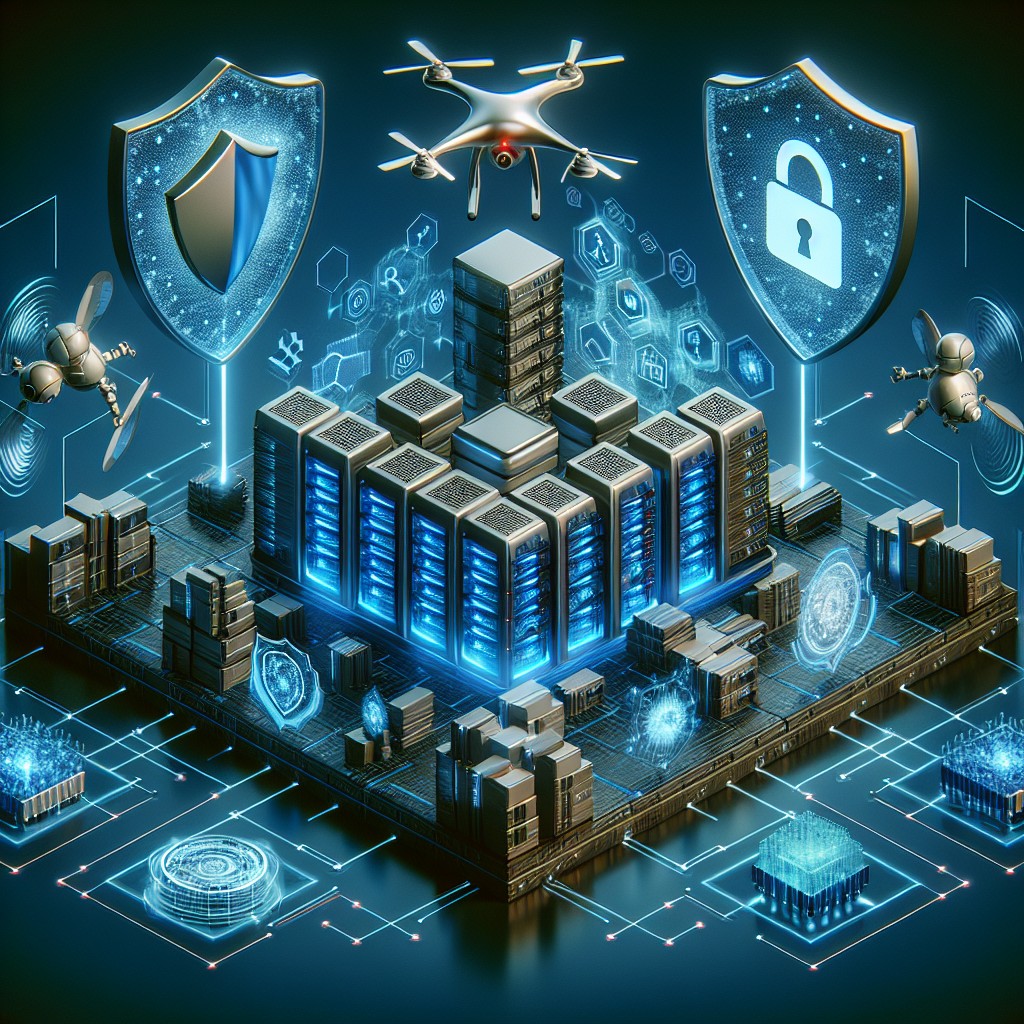
Best Practices for Implementing Robust Data Center Security Systems
Data centers are the heart of any organization’s IT infrastructure, housing critical data and systems that are essential for daily operations. With the increasing threat of cyber attacks and data breaches, implementing robust security measures is crucial to safeguarding sensitive information and ensuring business continuity. Here are some best practices for implementing strong data center security systems.1. Access Control: Limiting access to the data center is one of the most basic yet effective security measures. Implementing a multi-factor authentication system, requiring ID badges, and using biometric scanners can help prevent unauthorized individuals from entering the facility.
2. Physical Security: In addition to access control measures, physical security is crucial for protecting the data center from threats such as theft and vandalism. Installing surveillance cameras, alarms, and secure entry points can help deter intruders and provide an additional layer of protection.
3. Network Security: Data centers are vulnerable to cyber attacks, making network security a top priority. Implementing firewalls, intrusion detection systems, and encryption protocols can help secure data in transit and prevent unauthorized access to the network.
4. Monitoring and Logging: Continuous monitoring of the data center environment is essential for detecting and responding to security incidents. Implementing logging and auditing tools can help track user activity, identify potential threats, and ensure compliance with security policies.
5. Data Encryption: Encrypting sensitive data stored in the data center can help prevent unauthorized access in the event of a breach. Implementing encryption at rest and in transit can protect data from being compromised and ensure confidentiality and integrity.
6. Disaster Recovery and Backup: Implementing a robust disaster recovery plan is essential for ensuring business continuity in the event of a security incident or natural disaster. Regularly backing up data and having a plan in place to restore operations quickly can help minimize downtime and mitigate the impact of a security breach.
7. Employee Training: Security awareness training for employees is critical for preventing human error and ensuring compliance with security policies. Educating staff on best practices for data security, such as avoiding phishing scams and using strong passwords, can help reduce the risk of a security breach.
In conclusion, implementing robust data center security systems is essential for protecting sensitive information and ensuring business continuity. By following best practices such as access control, physical security, network security, monitoring and logging, data encryption, disaster recovery, and employee training, organizations can safeguard their data centers from cyber threats and maintain a secure IT environment. Remember that security is an ongoing process, and regularly reviewing and updating security measures is key to staying ahead of evolving threats.

Building a Robust Data Center Disaster Recovery Strategy
In today’s digital age, data is the lifeblood of any organization. With the increasing reliance on technology for day-to-day operations, the need to protect and recover data in the event of a disaster has never been more critical. A robust data center disaster recovery strategy is essential to ensure business continuity and minimize downtime.Building a comprehensive disaster recovery strategy starts with understanding the potential risks that could disrupt your data center operations. Natural disasters such as earthquakes, hurricanes, floods, and fires can cause physical damage to data centers, while cyberattacks, human error, hardware failures, and power outages can lead to data loss and system downtime.
Once the risks have been identified, the next step is to assess the impact of these events on your organization. This involves determining the criticality of data and applications, as well as the maximum tolerable downtime for each system. By prioritizing systems and data based on their importance to the business, you can allocate resources more effectively during a disaster recovery scenario.
One of the key components of a data center disaster recovery strategy is having a backup and recovery plan in place. This involves regularly backing up data and storing copies offsite to protect against data loss. In addition, having redundant systems and failover mechanisms in place can help ensure continuity of operations in the event of a hardware failure or network outage.
Another important aspect of disaster recovery planning is testing the plan regularly to ensure its effectiveness. Regular testing helps identify any weaknesses or gaps in the plan and allows for adjustments to be made before a real disaster occurs. It is also important to involve key stakeholders in the testing process to ensure that everyone is familiar with their roles and responsibilities during a disaster recovery scenario.
In addition to technical measures, it is also important to have a communication plan in place to keep employees, customers, and other stakeholders informed during a disaster. This includes establishing communication channels, such as phone trees, email lists, and social media, as well as designating a spokesperson to provide updates and instructions.
In conclusion, building a robust data center disaster recovery strategy is essential for ensuring business continuity and protecting critical data and systems. By identifying risks, prioritizing systems, implementing backup and recovery measures, testing the plan regularly, and establishing a communication plan, organizations can minimize downtime and mitigate the impact of disasters on their operations. Investing in a comprehensive disaster recovery strategy is a wise decision that can help safeguard the future of your business.
